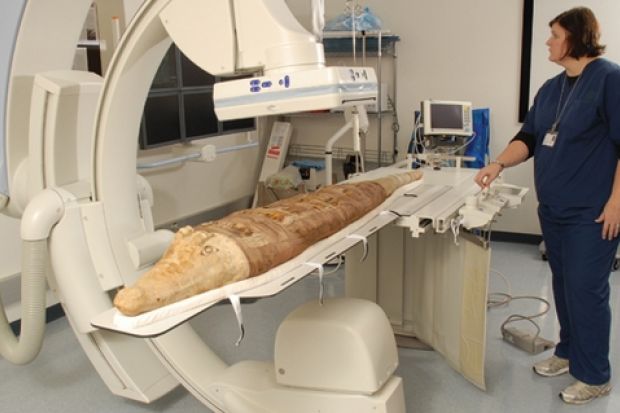After conservators stabilised the fragile Egyptian artefact, it underwent a computerised tomography scan at the Stanford University School of Medicine to learn more about how it was made and whether its decorative wrappings really contain the remains of an adult Nile crocodile.
In fact, the scan revealed that the mummy contains a collection of disarticulated, jumbled crocodile bones bundled within long papyrus stems and reinforced with rigid plant stalks.
The presence of two skulls confirmed the remains of at least two crocodiles.
The Hearst Museum's diverse collections of nearly 4 million objects spanning almost 2 million years include the largest anthropological collection in the Western US and the most comprehensive Native Californian collection in the world.
Send suggestions for this series on the treasures, oddities and curiosities owned by universities across the world to: matthew.reisz @tsleducation.com.
Register to continue
Why register?
- Registration is free and only takes a moment
- Once registered, you can read 3 articles a month
- Sign up for our newsletter
Subscribe
Or subscribe for unlimited access to:
- Unlimited access to news, views, insights & reviews
- Digital editions
- Digital access to THE’s university and college rankings analysis
Already registered or a current subscriber? Login
